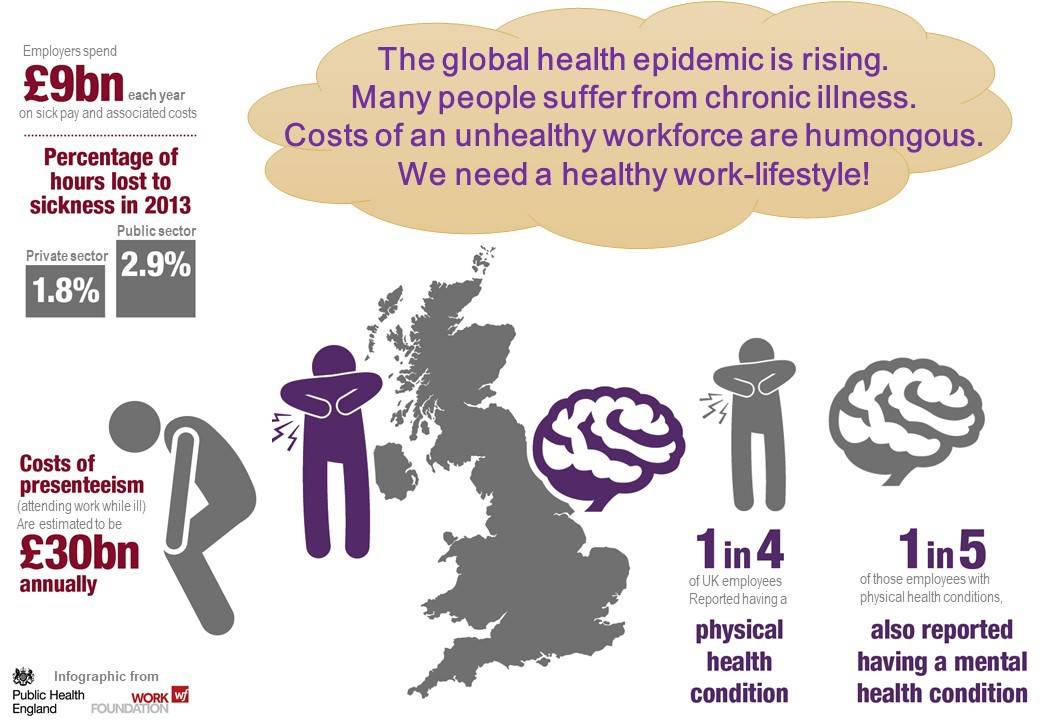
Health and wellbeing is gaining various interests within the built environment communities aiming to improve the quality of life. While many health intervention studies related to workplace have focused on health impacts at the individual level, companies are more interested in understanding the impacts of workplace health at the organizational level by exploring organizational outcome measures such as sickness absenteeism, presenteeism, job performance, employee engagement, and retention rates. Furthermore, organizations are more interested in analyses that are more meaningful to organizational decision-making in establishing better health promotion strategies, or motivating employees to engage in healthier behaviors. Thus, it is important to understand how specific environmental attributes are linked to particular organizational outcomes in order for organizations to make investment decisions for workplace health.
Based on the PROWELL Workplace Health and Wellbeing model developed by Innovative Workplace Institute (Figure 1), this study intends to examine the impact of workplace health in a comprehensive manner:

Figure 1. PROWELL Workplace Health and Wellbeing Model
1. by examining the impact of environmental attributes that promote health and wellbeing at both the individual level and the organization level
- Individual level: employee health and wellbeing states
- Organization level: employee productivity, engagement, attitudes, and satisfaction
and
2. by pairing two types of data for both the environmental health and wellbeing assessment part and the employee health and wellbeing assessment part
- Environmental health and wellbeing assessment:
a. A set of prescriptive measures of environmental attributes promoting health and wellbeing, using PROWELL: Workplace Health and Wellbeing Assessment Tool in seven dimensions of workplace health
b. Environmental sensors monitoring indoor air quality, thermal comfort, acoustics, and lighting
- Employee assessment:
a. Employee survey questionnaire on their health symptoms, productivity, engagement, attitudes, and satisfaction
b. Health-tracking sensors measuring individual employee’s physiological responses for fitness level, calorie consumption, skin temperature, and sleep quality.

Figure 2. Summary of Research Design
The data from employees will be linked to the environmental data to understand the impact of the workplace environment on employee health and wellbeing and organizational health outcomes. The study aims to identify how specific environmental attributes in seven dimensions of workplace health are linked to which organizational health outcomes by using a comprehensive set of subjective and objective data collected in the study. It will contribute to advancing workplace health and wellbeing research and health and wellbeing-enhanced workplaces in general.
- People
PI: Dr. Young Lee, PhD, LEED AP, WELL AP, FITWEL
Contact info: young.lee@ucl.ac.uk OR young.lee@innovativeworkplaceinstitute.org
- Output
1. Development of an online assessment tool to link the environmental performance in workplace health and wellbeing to the organizational health outcomes
2. Development of a set of recommendations for workplace health and wellbeing
3. Dissemination of research findings through media, reports, journal articles, and presentations in conferences, seminars, and lectures
4. Outreach activities with industry partners to inform practitioners of the best practice strategies for designing and managing workplace health and wellbeing- Impact
It will contribute to advancing workplace health and wellbeing research and health and wellbeing-enhanced workplaces in general.
 Close
Close

